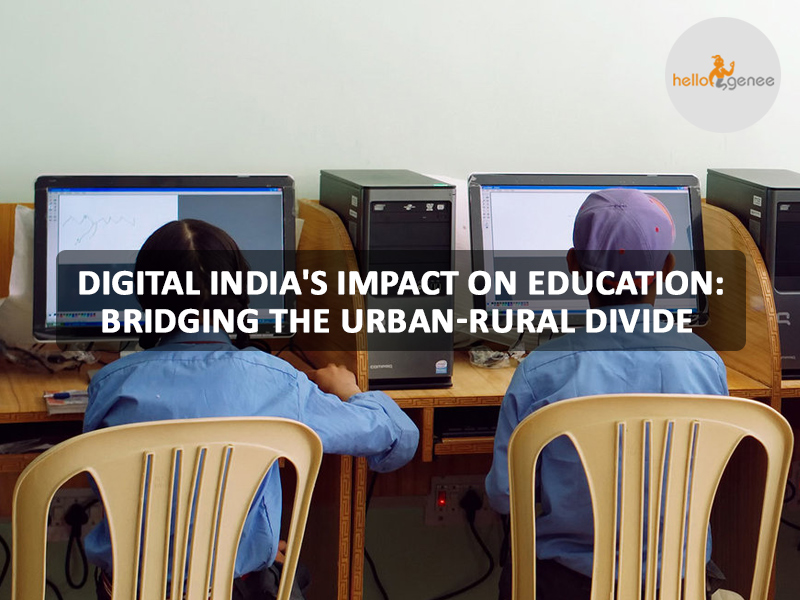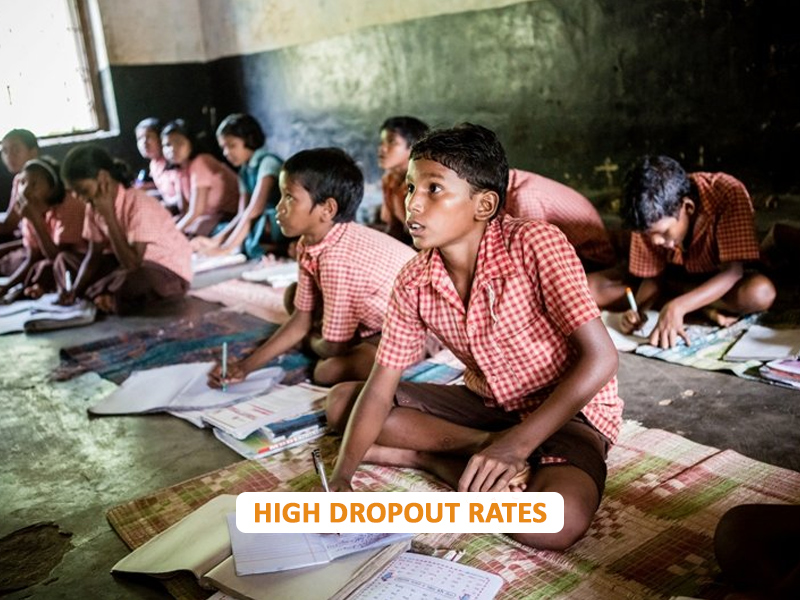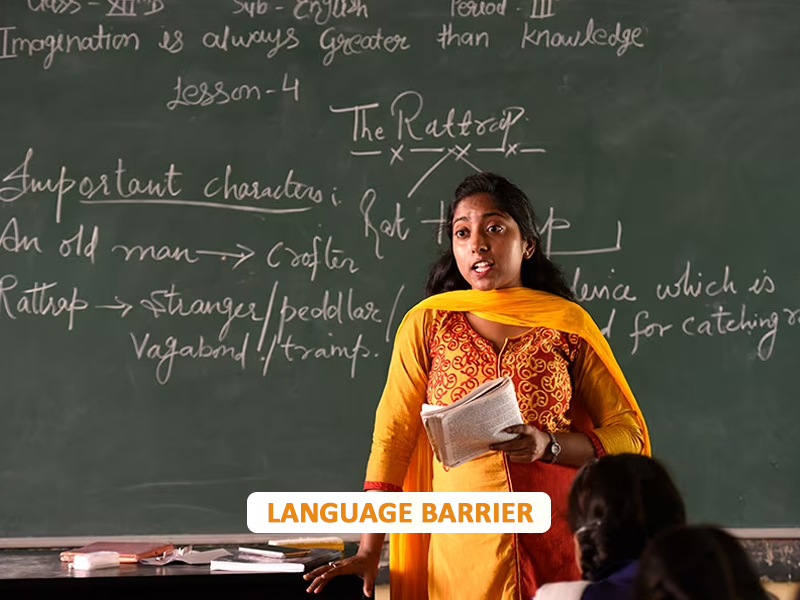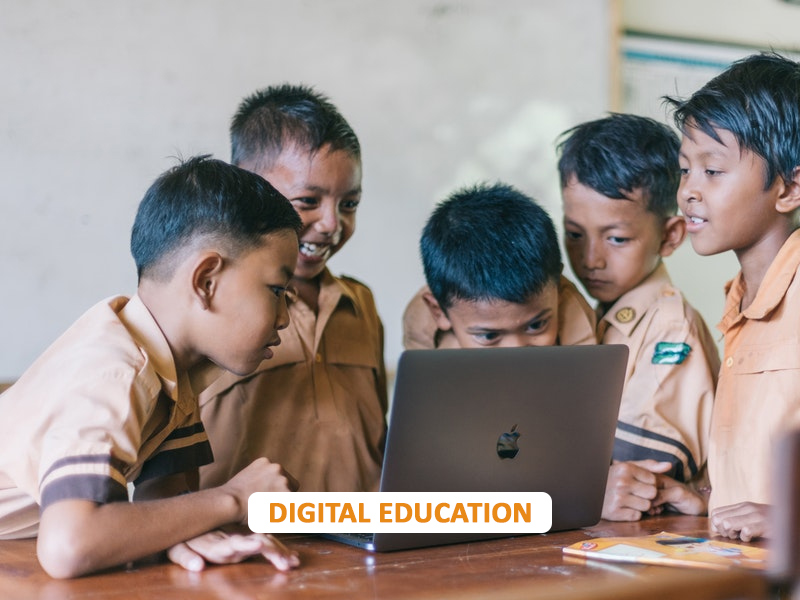Digital India's Impact on Education: Bridging the Urban-Rural Divide
Amidst the bustling
streets of India's digital transformation, a profound revolution is silently
unfolding. This transformation transcends the boundaries of urban centers,
reaching deep into the rural heartlands of the nation. Known as "Digital
India," it's not just reshaping the technological environment but
fundamentally reshaping the education area.
As India boldly
strides into the digital age, the influence of Digital India on education is
nothing short of revolutionary. It's a narrative that blurs the lines between
urban and rural, privileged and underprivileged and provides access to
knowledge for millions who were once left in the shadows.
In this article, we
embark on a journey through the digital transformation of education in India,
exploring how technology democratizes learning and bridges the urban-rural
educational divide.
Challenges and Opportunities in Rural Education
Rural education in
India faces several challenges, including:
- Lack
of qualified teachers
- Many rural schools need more qualified teachers, which can lead to poor
quality education.
- Poor
infrastructure
-
Many rural schools need better infrastructure, such as adequate
classrooms, libraries, and laboratories.
- Low
parental involvement
-
Parents in rural areas are often less involved in their children's
education than in urban areas.
- High
dropout rates
- Dropouts are higher in rural and urban areas.
- Language
barrier
- Many rural students need to
speak the language of instruction in school.
Despite these challenges, there are also several opportunities for improving rural education in India. These include:
- Digital
education
-
Digital education can help overcome many of the challenges rural schools
face. For example, digital devices can give students access to
high-quality educational resources and learning opportunities.
- Community
involvement
-
Community involvement can help improve rural education by supporting
schools and teachers. For example, parents can volunteer in schools and
help to raise funds for educational resources.
- Government
support
- The government can play a
crucial role in improving rural education by providing financial support
to schools and teachers and by developing and implementing policies that
support rural education.
How can digital education solve the challenges of rural education in India?
Digital education
can solve the challenges of rural education in India in several ways. For
example:
- Access
to high-quality educational resources
- Digital devices can be used to provide students with access to a
wide range of high-quality educational resources, such as e-books, lesson
plans, videos, and assessments. These resources can be tailored to the
needs of individual students and can be accessed at any time and from
anywhere.
- Personalized
learning
- Digital devices can be used to provide students with customized learning
experiences. For example, students can use digital devices to take quizzes
and assessments, and the results of these assessments can be used to
provide students with personalized feedback and recommendations.
- Collaboration
- Digital devices can facilitate cooperation
between students and teachers. For example, students can use digital
devices to work on projects together, participate in online discussions,
and get help from teachers outside of class time.
- Flexibility
- Digital education can provide students with
more flexibility in their learning. For example, students can use digital
devices to learn at their own pace and complete assignments independently.
Overall, digital
education has the potential to make a significant contribution to improving
rural education in India. By providing students with access to high-quality
educational resources, personalized learning experiences, and collaborative
opportunities, digital education can help overcome many of the challenges rural
schools face.
The Digital Revolution in Education
The Digital Revolution Unveiled
The digital
revolution has ushered in a new era, fundamentally altering how we think,
communicate, work, and learn. Information and Communication Technologies (ICT)
have become integral to our daily lives, and education is no exception. This
digital transformation has redefined knowledge creation, dissemination, and
acquisition, offering many opportunities for students and educators.
Digital Revolution: A Timeline
The seeds of the
digital revolution were sown with the advent of the transistor in 1947, which
paved the way for advanced digital computers. As time progressed, computers
became commonplace, and the internet emerged as a game-changer in the 1990s,
transforming how businesses, governments, and individuals operate. By the
2010s, the internet had become an essential part of daily life for a
significant portion of the global population.
Digital Revolution Meets Education
The education
sector is keeping pace in a world where almost everything is digital or
transitioning towards digitalization. Online education has emerged as a
trendsetter, challenging the traditional brick-and-mortar institutions. Online
learning platforms are available 24/7, allowing students to participate
conveniently breaking free from rigid schedules.
Moreover, online
education is accessible across various devices, offering an eco-friendly
alternative to conventional textbooks.
E-Learning and Access to Quality Education
The Digital India initiative
has profoundly impacted the education sector in India, both in urban and rural
areas. Through various industries, the government has allowed students to
access high-quality education resources and learning opportunities regardless
of location or socioeconomic background.
One of the most
significant Digital India initiatives in education is the Digital
Infrastructure for Knowledge Sharing (DIKSHA) platform. DIKSHA provides a
one-stop shop for teachers and students to access various educational resources,
including e-books, lesson plans, videos, and assessments. The platform is
available in both Hindi and English and accessible to students and teachers
across the country.
Another important
Digital India initiative in education is the SWAYAM Prabha TV channel.
SWAYAM Prabha broadcasts live lectures from top universities and educational
institutions across India. The channel is available on DTH and cable TV
networks and is also accessible online. This has made it possible for students
in rural areas to access high-quality education from some of the best
universities in the country.
In addition to
these initiatives, the government has launched several programs to provide
digital devices and internet access to students in rural areas.
For example, the
government has provided laptops to over 1 million students in rural areas
through the Sakshat program. The government has also launched the BharatNet
project to provide broadband internet access to all villages in India.
These Digital India
initiatives have had several positive impacts on the education sector in both
urban and rural areas. For example, students in rural areas now have access to
high-quality educational resources and learning opportunities that were
previously unavailable to them. Additionally, students in urban areas can now
learn at their own pace and in their own way.
Here are some
specific examples of how Digital India initiatives have revolutionized the
education sector in India:
- In
the rural village of Pipar, Rajasthan, students can now access
high-quality education from top universities across India thanks to SWAYAM
Prabha TV.
- In
the urban slum of Dharavi, Mumbai, students use laptops provided by the
Sakshat program to learn new skills and prepare for the competitive job
market.
- In
Ahmedabad, students use online platforms to collaborate on projects and
participate in virtual classes with students worldwide.
These are just a
few examples of how Digital India initiatives are transforming the education
sector in India. As the government continues to invest in digital
infrastructure and educational resources, we can expect to see even more
positive impacts on the quality of education available to all students in
India.
Conclusion: Bridging the Urban-Rural Educational Divide
As we conclude, it
becomes evident that Digital India's transformative impact on education extends
beyond urban centres, effectively reaching rural communities. This initiative
has successfully dismantled geographical barriers, ensuring students from diverse
backgrounds have equal access to educational resources. By fostering an
environment of inclusivity and innovation, Digital India is not only closing
the urban-rural education gap but also propelling the nation towards a
brighter, more equitable future.



























Comments
Aamir Sahil
Digital India
22 Feb 2024 | 12:42 PM |Aamir
Test reply
23 Feb 2024 | 07:04 PMSahil
Test reply 2
24 Feb 2024 | 12:35 PMTaha Ratlamwala
Test reply 3
24 Feb 2024 | 12:39 PMBehlah
Test reply 4
26 Feb 2024 | 12:25 PM